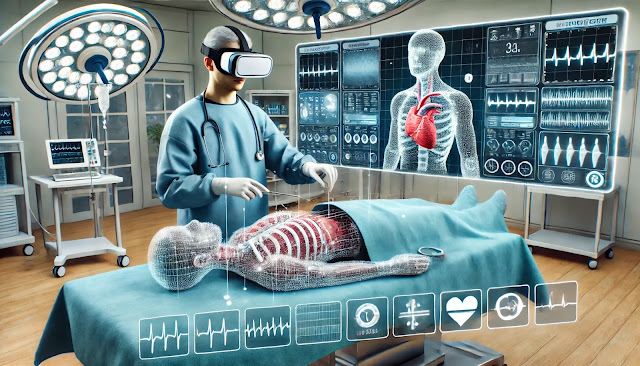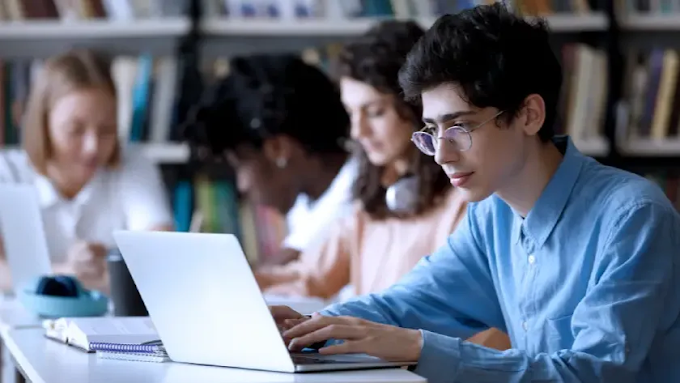Virtual Reality (VR) in Education: Bringing Lessons to
Life
Virtual Reality (VR) is no longer just a futuristic concept
limited to gaming and entertainment. It has made significant inroads into the
field of education, offering innovative ways to enhance learning experiences.
By creating immersive, interactive environments, VR brings lessons to life,
making education more engaging and effective. This technology is transforming
traditional teaching methods, enabling students to explore and interact with
complex concepts in ways that were previously unimaginable.
The Technology Behind Virtual Reality
Virtual Reality is an immersive technology that creates a
simulated environment, allowing users to interact with 3D spaces as if they
were real. The core components of VR systems include:
- Head-Mounted
Displays (HMDs): These devices, such as Oculus Rift, HTC Vive, and
PlayStation VR, cover the user’s field of vision and provide a
stereoscopic display to create a sense of depth. HMDs track the user's
head movements to adjust the visuals accordingly, ensuring a realistic
experience.
- Motion
Tracking Sensors: These sensors track the user's movements and
translate them into the virtual environment. This includes head tracking,
hand tracking (through controllers or gloves), and even full-body tracking
in advanced systems.
- Interactive
Controllers: These are handheld devices that allow users to interact
with the virtual environment, such as picking up objects, pointing, or
pressing buttons. Some advanced VR systems use gloves or motion sensors to
capture more nuanced hand and finger movements.
- Content
Creation Tools: Software platforms like Unity and Unreal Engine are
commonly used to develop VR content. These tools allow educators and
developers to create customized virtual environments tailored to specific
learning objectives.
Applications of VR in Education
- Immersive
Learning Environments: VR can transport students to virtually any
location or environment, whether it's exploring the pyramids of Egypt,
walking through a human cell, or experiencing historical events firsthand.
These immersive environments enable students to explore and learn in ways
that are far more engaging than traditional textbooks or videos.
- Interactive
Simulations: VR excels in providing interactive simulations that allow
students to practice and hone their skills in a safe environment. For
example, medical students can perform virtual surgeries, engineering
students can work on complex machinery, and chemistry students can conduct
experiments in a virtual lab. These simulations provide hands-on
experience without the risks or costs associated with real-world practice.
- Virtual
Field Trips: Traditional field trips can be limited by factors such as
location, cost, and safety. VR overcomes these limitations by offering
virtual field trips to anywhere in the world—or even beyond. Students can
visit distant countries, outer space, or underwater ecosystems, all from
the comfort of their classroom. These experiences broaden students'
horizons and foster a deeper understanding of different cultures,
environments, and scientific concepts.
- Collaborative
Learning: VR enables collaborative learning experiences, where
students from different parts of the world can come together in a shared
virtual space. This fosters teamwork, communication, and global
understanding. In a virtual classroom, students can interact with each
other, share ideas, and work together on projects, creating a more
interactive and engaging learning environment.
- Specialized
Training: Certain fields, such as aviation, military, and emergency
response, require specialized training that can be expensive and risky. VR
provides a cost-effective and safe alternative by simulating real-world
scenarios. Trainees can practice emergency procedures, piloting aircraft,
or responding to combat situations in a controlled virtual environment.
This not only reduces costs but also enhances the quality of training.
Benefits of VR in Education
- Enhanced
Engagement: VR captures students' attention by immersing them in the
learning experience. This heightened level of engagement can lead to
better retention of information and a deeper understanding of the subject
matter.
- Personalized
Learning: VR allows for individualized learning experiences. Students
can learn at their own pace, revisit complex concepts, and explore topics
that interest them. This personalized approach can help cater to diverse
learning styles and needs.
- Overcoming
Physical Limitations: VR eliminates the physical constraints of
traditional education. For example, students with disabilities can
participate in virtual field trips or engage in simulations that would be
otherwise inaccessible.
- Safe
Learning Environment: In fields that require hands-on practice, VR
provides a safe environment for students to learn and make mistakes
without real-world consequences. This is particularly valuable in
disciplines like medicine, engineering, and emergency response.
Challenges and Future Prospects
While the benefits of VR in education are clear, there are
challenges to widespread adoption. These include the high cost of VR equipment,
the need for technical training for educators, and the development of
high-quality educational content. However, as the technology becomes more
affordable and accessible, and as more content is developed, VR is expected to
play an increasingly important role in education.
Virtual Reality is revolutionizing education by bringing
lessons to life in ways that were once the stuff of science fiction. By
providing immersive, interactive, and personalized learning experiences, VR has
the potential to transform how we teach and learn. As the technology continues
to evolve, it will likely become an integral part of educational systems
worldwide, offering students unparalleled opportunities to explore, learn, and
grow.







0 Comments